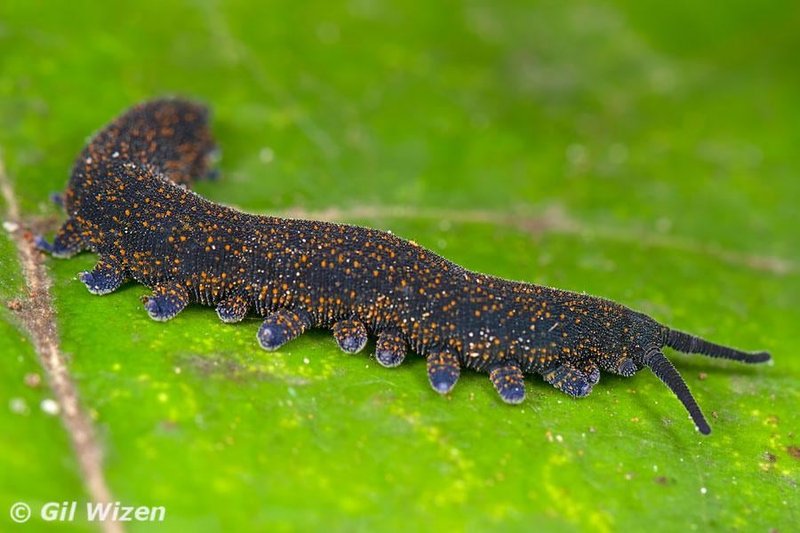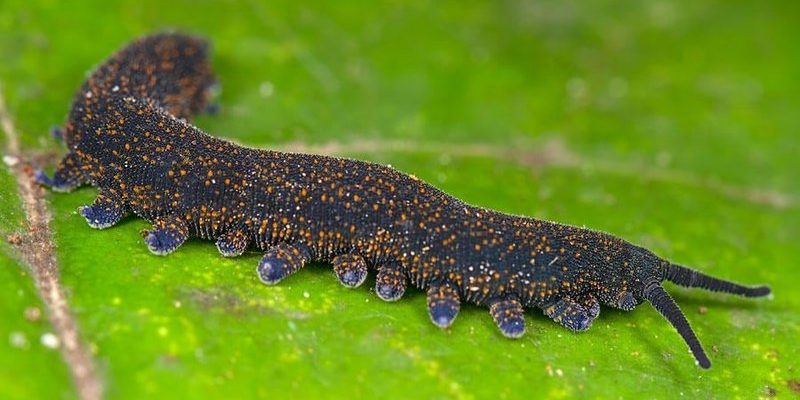
Just like a tightrope walker who expertly balances on a thin wire, velvet worms balance between life and survival in their humid habitats. They are a testament to nature’s creativity, showing us that even the most unusual creatures have developed clever tactics to get through tough situations. In this article, we’ll unravel the secrets of velvet worms and their resilient nature during tropical storms, shedding light on their biology and survival strategies in a way that even a curious beginner can understand.
What Are Velvet Worms?
Velvet worms, or *Onychophora*, are fascinating creatures that look like something out of a science fiction movie. They have soft, elongated bodies, covered in a velvety layer that gives them their name. Picture a mix of a worm, a caterpillar, and a tiny creature from your wildest dreams. These invertebrates are mostly found in humid, tropical environments, particularly in rainforests across Central and South America.
You might be wondering how these critters fit into the ecosystem. Well, they play a crucial role as predators, hunting down smaller insects and other invertebrates. With their sticky slime, they ensnare their prey, almost like a spider’s web but much cooler. Their fascinating hunting technique shows how well-adapted they are to their environment.
What’s truly interesting is their **reproductive** strategy. Velvet worms give birth to live young rather than laying eggs. This live birth is quite rare among invertebrates, making them even more unique. They often have a small number of offspring, but they provide them with nourishment during their early stages, increasing their chances of survival.
Living in Humid Environments
Velvet worms thrive in environments that are consistently humid and warm. These conditions are essential for their survival because velvet worms breathe through their skin, absorbing oxygen directly from the air. If their environment becomes too dry, it can be fatal for them. Think of it like trying to breathe through a straw—once the airflow is limited, it’s tough to get the oxygen you need.
Tropical forests offer these essential conditions, maintaining the balance of moisture required by these creatures. You’ll often find them hiding in leaf litter or under rocks, where humidity levels stay high. Their secretive nature serves them well; it helps them avoid predators and traps them in a moist bubble.
Surprisingly, velvet worms have adapted various physiological traits to cope with fluctuations in their environment. For instance, they can enter a state of **dormancy** when conditions get tough, slowing down their metabolic processes. This strategy allows them to endure temporary droughts, patiently waiting for more favorable conditions to return.
The Impact of Tropical Storms
Tropical storms can be brutal. High winds and torrential rains can devastate ecosystems, and velvet worms are no exception. However, they’ve developed clever survival mechanisms to weather these storms. As the winds howl and the rain pours, velvet worms hunker down in their moist habitats, often waiting out the worst of the storm.
During such storms, the forest floor can quickly become a chaotic scene, with water pooling and debris flying around. Velvet worms rely on their **moist skin** to withstand sudden changes in their environment. Their ability to stay hydrated means they can keep their bodily functions running even when the external conditions are less than ideal.
Another fascinating aspect is their ability to burrow. When the weather turns severe, velvet worms often dig deeper into the soil to avoid the harsh effects of the storm. This behavior not only protects them from the chaos above but also helps them stay in moisture-retaining environments.
How Velvet Worms Adapt to Changing Conditions
Adaptation is a powerful tool in nature, and velvet worms have mastered this concept. These small creatures can manage to thrive even in environments that seem hostile during tropical storms. For instance, their ability to produce **slime** is crucial. During heavy rains, this slime helps them maintain hydration and provides a slick surface to glide over wet terrain.
You might be surprised to learn that their slime isn’t just for hunting. It’s also a form of protection. When threatened, velvet worms can excrete a significant amount of slime to confuse and deter predators. In the chaotic aftermath of a storm, this adaptation can mean the difference between life and death.
The slime also plays a role in their reproductive strategy. Velvet worms can use it to create a protective cocoon for their young, ensuring the next generation has a fighting chance as they grow up in a sometimes unsteady environment.
Survival Strategies During Tropical Storms
So, how exactly do these velvet wonders ride out tropical storms? Here are some of the key survival strategies they employ:
- Secrecy and Shelter: By hiding in crevices or under leaf litter, they avoid the brunt of the storm.
- Reduced Activity: Slowing down their metabolic functions allows them to conserve energy and resources.
- Slime Production: Their slime not only helps with hydration but also offers protection from predators.
- Burrowing: Digging deeper into the soil keeps them safe from floodwaters and provides constant moisture.
You might find it fascinating that these strategies mirror some human survival tactics during storms, like seeking shelter and conserving resources. It’s just a reminder of how interconnected all life is!
Additionally, after the storm passes, velvet worms emerge to assess their surroundings. They are opportunistic, taking advantage of the altered landscape to hunt for prey that may have been displaced by the storm.
Making Sense of Velvet Worms’ Role in the Ecosystem
Velvet worms aren’t just quirky forest dwellers; they play a significant role in maintaining the balance of their ecosystem. As predators, they help control insect populations, which is essential for the health of their environment. Without these little hunters, certain insect species could overpopulate, leading to imbalances that might ripple through the ecosystem.
Moreover, their unique adaptations provide valuable insights into evolutionary biology. Studying how they survive tropical storms can inspire research into resilience in other species, including humans. Their survival strategies might even influence conservation efforts in vulnerable ecosystems facing the ongoing challenges of climate change.
These fascinating creatures remind us that every being, no matter how small, has its place and purpose within the natural world. By understanding velvet worms better, we can appreciate the intricate web of life in which we all exist.
Velvet worms are more than just curious little creatures; they are masters of survival in the face of adversity. With their unique adaptations and clever survival strategies during tropical storms, they offer a fascinating glimpse into the resilience of life on Earth. From their ability to produce slime to their burrowing methods, these creatures remind us that survival takes many forms.
Next time you hear about a storm, think of the velvet worms peacefully riding out the chaos in their moist shelters. They show us that, even in the wildest storms, there’s a way to adapt and endure with grace. Their story is a testament to the wonders of nature and the endless creativity of evolution. So, the next time you find yourself in a tropical forest, keep an eye out for these incredible beings—you never know what other secrets the forest might be hiding!

